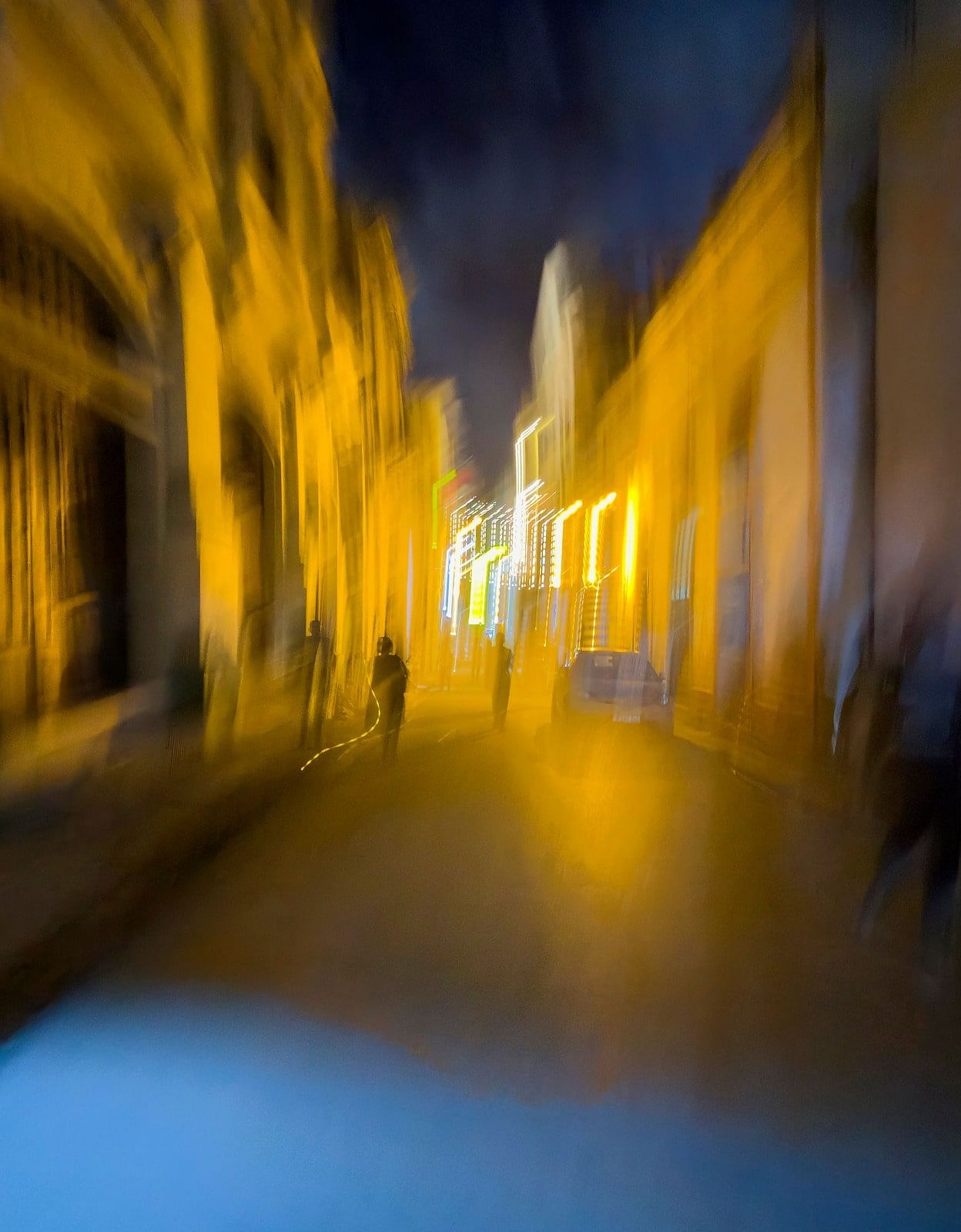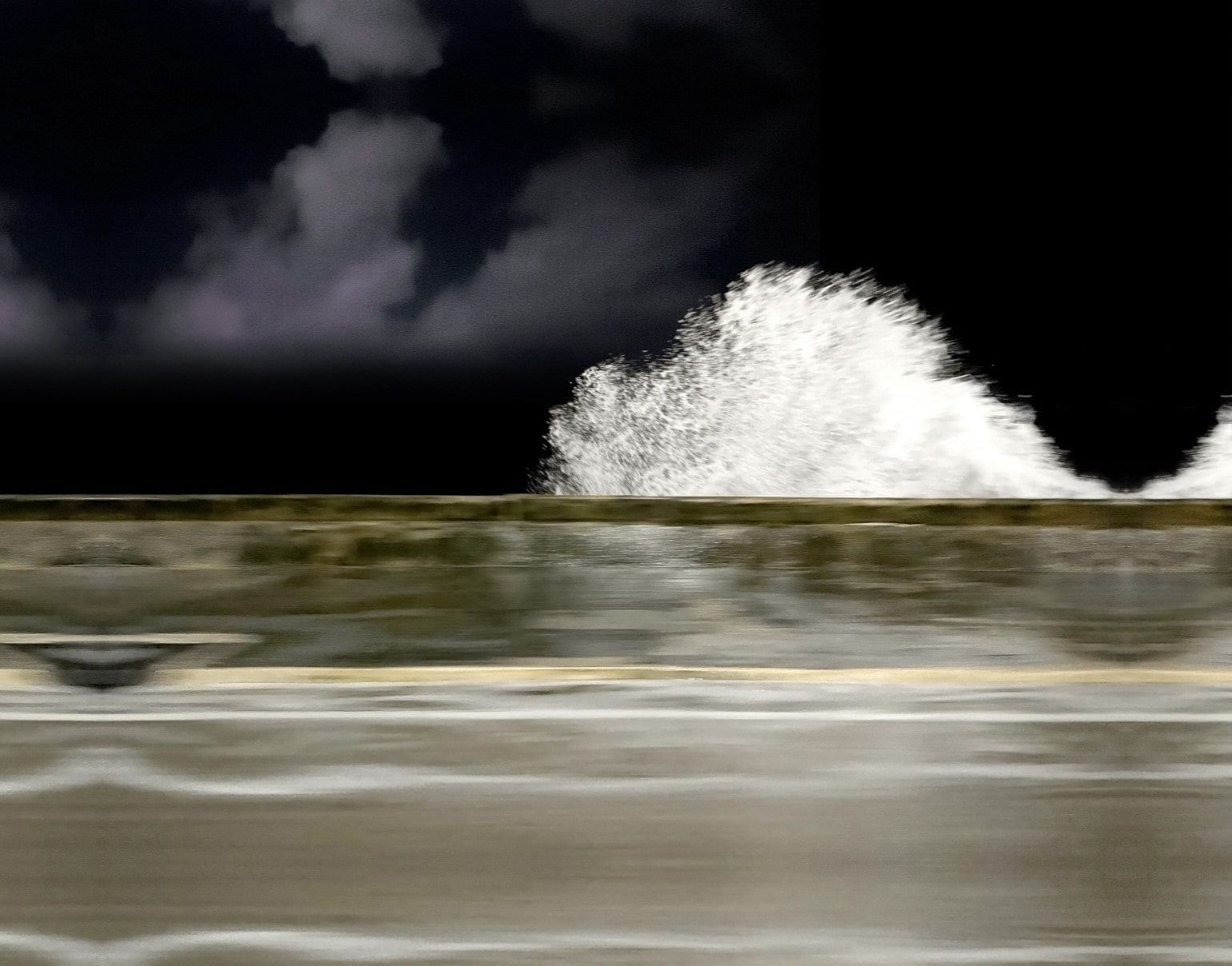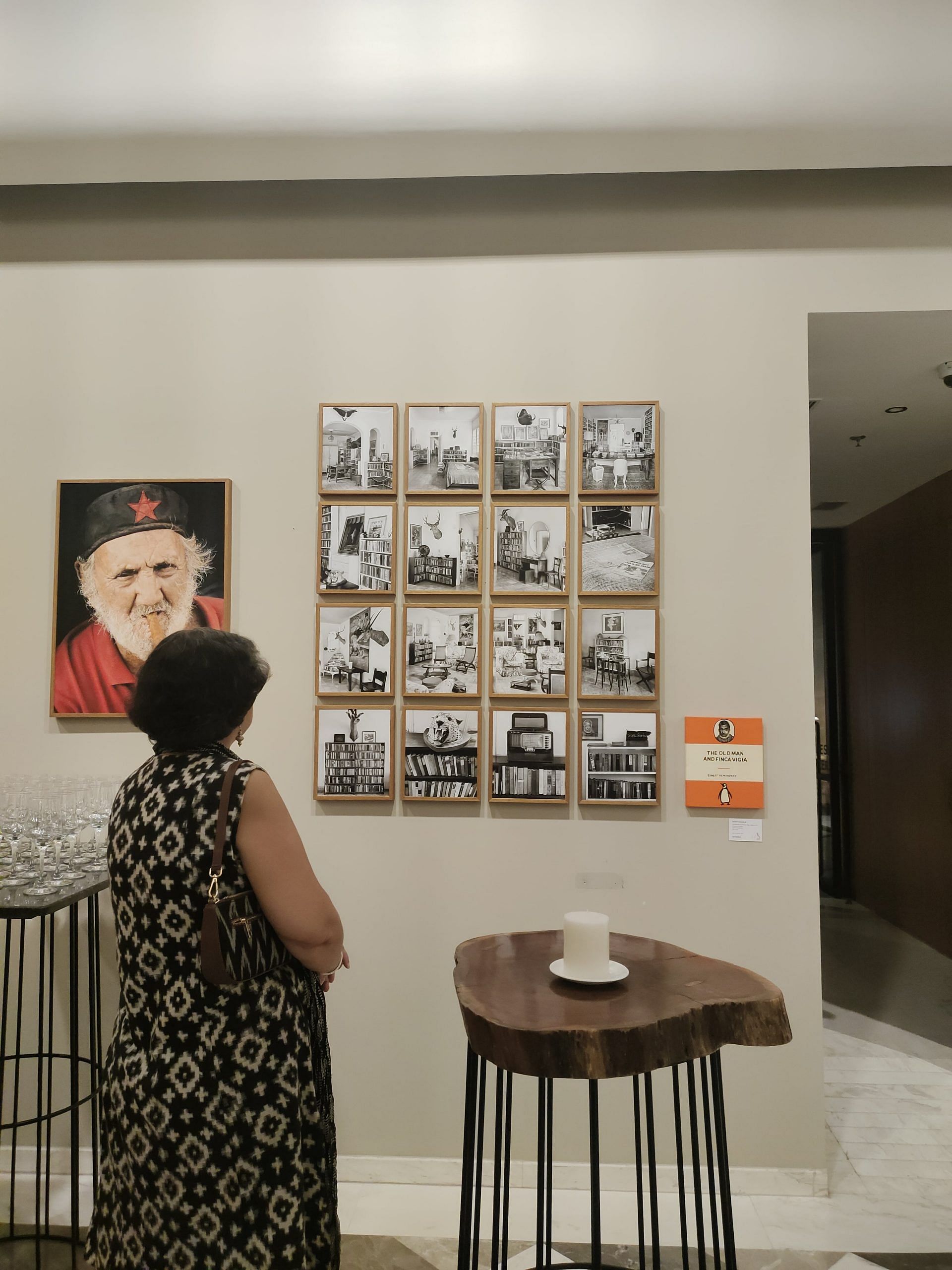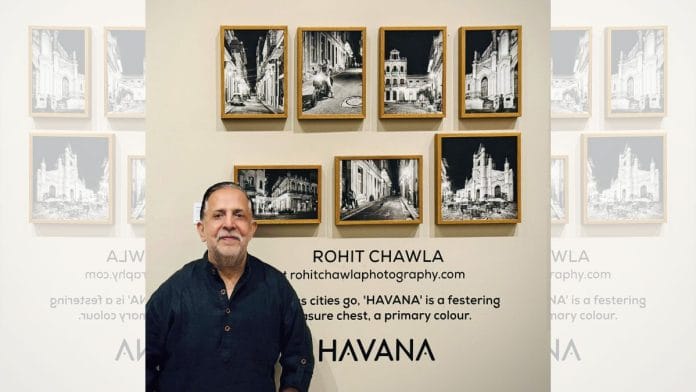New Delhi: The world sees Cuba as a country frozen in time. It promises tourists vintage cars, premium cigars, and something far more alluring—nostalgia. Artist Rohit Chawla’s new exhibition captures all this while also showcasing its deeper beauty and enduring strength. And they are more than just the postcards the world has trapped them in.
“Cubans are resilient. It’s like they’re cocking a snook at the world—they manage to have a good time no matter what. Despite the restrictions, the sanctions… it’s a very proud nation,” Chawla said in a conversation with journalist Salil Deshpande at the opening event for his exhibition, ‘Havana’.
On 25 October, The Quorum Gurugram hosted over 50 artists, art collectors, and friends of Chawla. Some had come to witness the photographer’s recent foray from fashion, travel, and portraiture into painting, while others were more interested in Cuba.

The island hasn’t historically been a popular travel destination for Indians, mainly due to the flight complications involved. That is beginning to change.
“Now, Indians are travelling for experience. And Cuba is all about the experience—they can go back in time and relive the 1950s and 1960s,” said Sanjay Sondhi, CEO of OM Tourism.
Also read: Lithuanian ambassador shows how one artist’s work connects the Baltic country, France, India
From pixel to paint
Chawla’s exhibition was also born out of a tourism-related undertaking. The artist spent 10 days in Havana last year, tasked by MGM Muthu Hotels with touring and shooting the city. However, the city offered him more than just the obligatory beach, the stunning sunrise, and the cigar-smoking woman.
“I didn’t want to come back just with travel pictures. My attempt was to move from pixel to paint,” he told ThePrint.
Another reason behind Chawla’s movement from camera to canvas was phone photography.
“Almost everybody’s a photographer now. Anybody can document that Ladakhi woman with her wrinkles, and decide the level of sharpness he wants on them,” he said. “I had to reinvent the game to stay relevant.”
In an age where everything in the world turns into a photograph, Chawla chose to do the opposite. Two pieces in the exhibition were paintings that began as photos. Chawla traced them on canvas and went through the painstaking process of achieving realism in painting, a project straight out of Hanya Yanagihara’s A Little Life.
Chawla also brought a painter’s sensibility to some of his photos. ‘Havana Night’ evoked a warm watercolour dusk, while the ‘Fleeting’ series captured the Caribbean Sea crashing against the Malecon. The former involved manipulating the blue dusk light while the latter was clicked from a moving car.

These photos are delightfully blurred—something phone photographers would instantly send to the trash folder. Chawla’s movement into fine art photography is in his inverting of the conventions and methods associated with popular photography.
Not everyone sees it that way.
“Photography as an art may be permeating into the janta (public) of late, but I would say the more the merrier,” said art collector Maneesh Baheti. “Unless you make art inclusive, how do you make it popular? Everybody can’t paint, but everybody can take pictures.”
Also read: Saris, kumkum, gossip—Women are central to Thota Vaikuntam’s art
Frozen in time
For the larger part of his career, Chawla has been a portrait photographer. And he hasn’t stuck with one field of activity: He has shot actors, politicians, and authors. The first two never had an effect on him, but authors always did.
“Politicians never intimidated me, neither did Bollywood, but authors did. It’s always mind over might,” he said.
Portraiture allowed Chawla to trespass into the lives of people that intrigued him. So when he got the chance to photograph Nobel Prize-winning author Ernest Hemingway’s Cuba residence, he jumped at the chance. Some greased palms later, he found himself at the Finca Vigia—but he wasn’t allowed to enter the house. He had to shoot it through windows: The light shifted constantly, necessitating a lot of manoeuvring.
The Cuban government limits access to the house, which makes Chawla’s series, ‘The Old Man and Finca Vigia’ (complete with a painted book cover bearing a Penguin-esque logo), all the more valuable. The 16 images exhibited at ‘Havana’ show a house that is in stark contrast to Hemingway’s economy in writing.

The Finca Vigia represents the celebrity author’s larger-than-life status. Hunting trophies decorate walls lined with bookshelves. A house visited by the likes of Katharine Hepburn and Charlie Chaplin, it has a historic appeal too.
“It felt like a safari lodge lost in time, preserved the way it once was,” Chawla said.
This sense of Havana being frozen in time was central to the exhibition, which perhaps prompted Deshpande to wonder aloud whether it was an artist’s romanticisation of the everyday struggles of Cubans.
While Chawla agreed that “the isolation is quite dire in Cuba,” he also saw beauty in its “glorious decay”.
Cuban diplomat Abel Aballe Despaigne found himself nostalgic at the exhibition. When asked if Chawla had managed to capture Havana’s beauty, he said, “The beauty of Havana is subjective. Chawla has represented its essence in his work.”
‘Havana’ is on display at The Quorum Gurugram until 30 November.
(Edited by Theres Sudeep)







“Prasanna, I just finished reading your article on the Havana photo exhibition, and I have to say, it was fantastic! You captured the essence and spirit of Havana beautifully – I could almost feel the vibrant colors and rich culture coming through your words. Your descriptions made me feel like I was walking through the exhibition myself. Great work!”